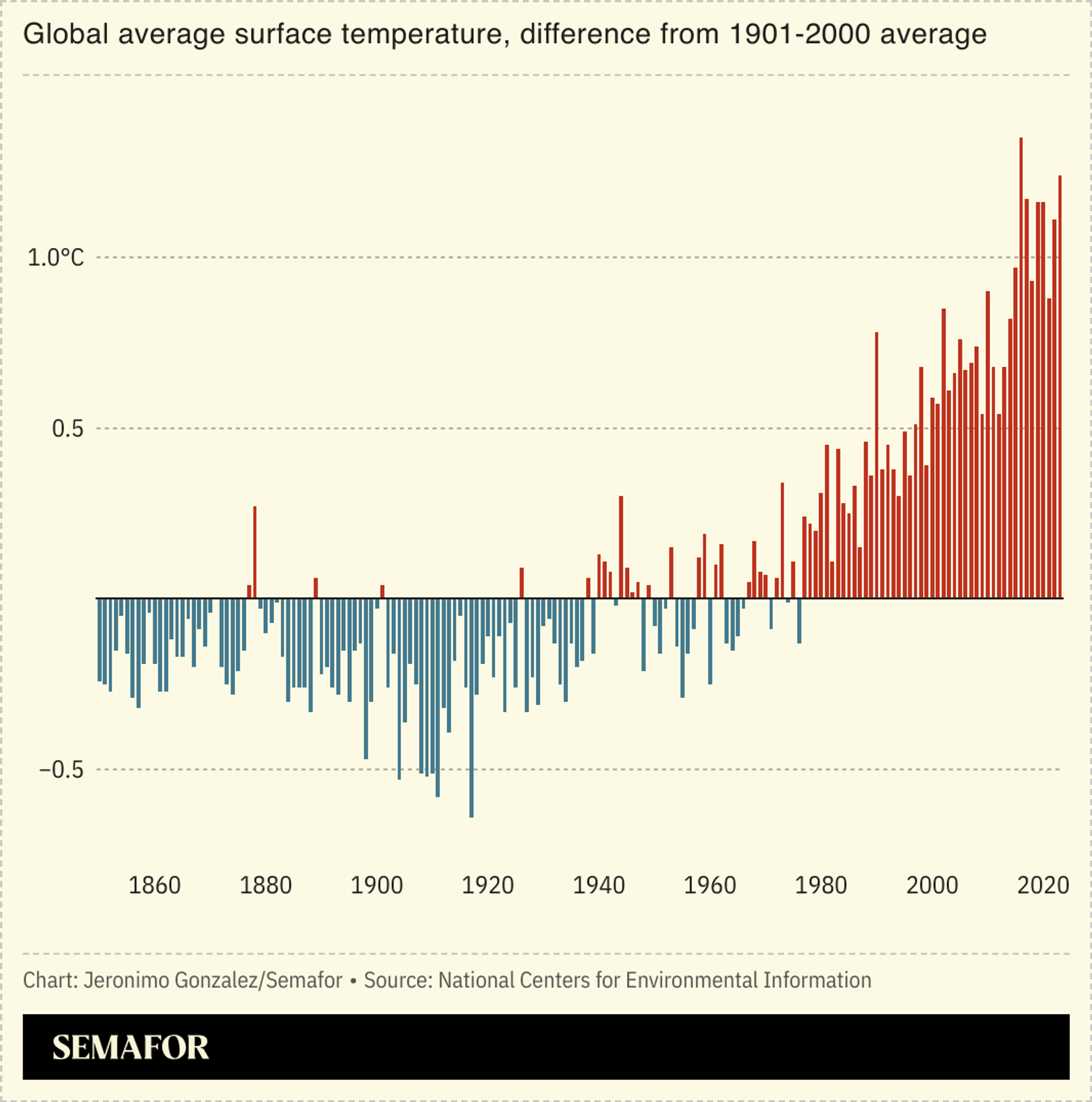The News
Last month was the hottest January on record, surprising scientists who expected the La Niña weather phenomenon to bring cooler temperatures after two years of heat.
Temperature records have tumbled since mid-2023, driven by natural cycles as well as a long-term warming trend caused by greenhouse gases, but models predicted a downturn at the end of last year.
One possible reason for continued warming is reduced particulate pollution: As coal use drops, there are fewer particles in the air to reflect sunlight.
The energy transition has slowed growth of fossil fuels, but progress is patchy: Ørsted, the world’s biggest offshore wind company, announced it would cut investment 25% by 2030, and Norwegian energy giant Equinor is halving its spending on renewables.

